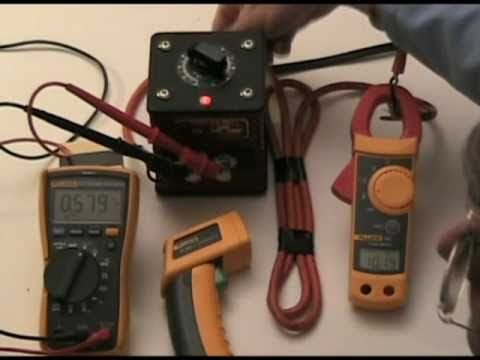Don't plug a 30-amp extension cord in the middle of 50-amp shore power...
That's an easy way to start a fire, so don't do it!
Hey Mike,
I have enjoyed your J.A.M. articles over the past couple of years and found them to be very informative and helpful. I was quite interested in your 'hot skin' video, purchased a Fluke voltage detector and tested my Lance 2465 travel trailer. Fortunately, there was no evidence of a 'hot skin' condition on any -metal in the RV or stairs, but to my surprise the extension cords and adapters detected voltage!
The extensions are connected as follows: 50-amp outlet to a Watchdog surge protector to a 50/30amp adapter to a 30-amp 50' cord to a 30/50-amp adapter to the RV 50-amp cord. Voltage was detected on the 30-amp extension cord, both adapters, RV 50-amp cord and screw at the point of connection to the RV.
Is this condition caused by dropping from 50 to 30-amp cords and back to 50-amp? Is this a condition to be concerned about?
Thank you, - Charlie K
Charlie,
Actually, that’s exactly how all Non-Contact Voltage Testers are supposed to work. Yes, they will detect a voltage when touching an energized extension cord as you describe. And I’m the guy who figured out you could use a NCVT to discover a hot-skin voltage, but the outlet and extension cord testing is what they were designed to do. Here’s a video of me demonstrating a dual-range Southwire NCVT which I really like.
Danger, Will Robinson!!!
However, if I’m reading your connection description properly, by inserting a 30-amp extension cord in the middle of the run between a 50-amp outlet on the pedestal and the 50-amp inlet on your RV, you’ve created a very dangerous fire hazard. There’s nothing to stop you from exceeding 30-amps of total current draw in your RV, and the pedestal will happily supply more than 30 amps without tripping the 50-amp circuit breaker. So you could easily pull up to 50-amps of current through the 30-amp cord which could start a fire in that extension cord or one of the 30/50 or 50/30-amp adapters.
Don’t do this!
I’ve also had a few readers who stepped a 50-amp pedestal outlet down to a 15-amp extension cord, then stepped it back up to a 50-amp RV inlet. That’s WAY more dangerous since a 15-amp extension cord with 30-amps of current can easily reach the boiling point of water in 5 minutes. Here’s a video I made a while ago demonstration this.
If you did have a fire, and an inspector (and your insurance company) looked at the connection, they might refuse to honor a claim.
Yes I know shore power cords are heavy, but never plug a light-duty extension cord in the middle of a 30 or 50-amp shore power connection using adapters. That’s very dangerous as it could easily start a fire.
Let’s play safe out there - Mike







